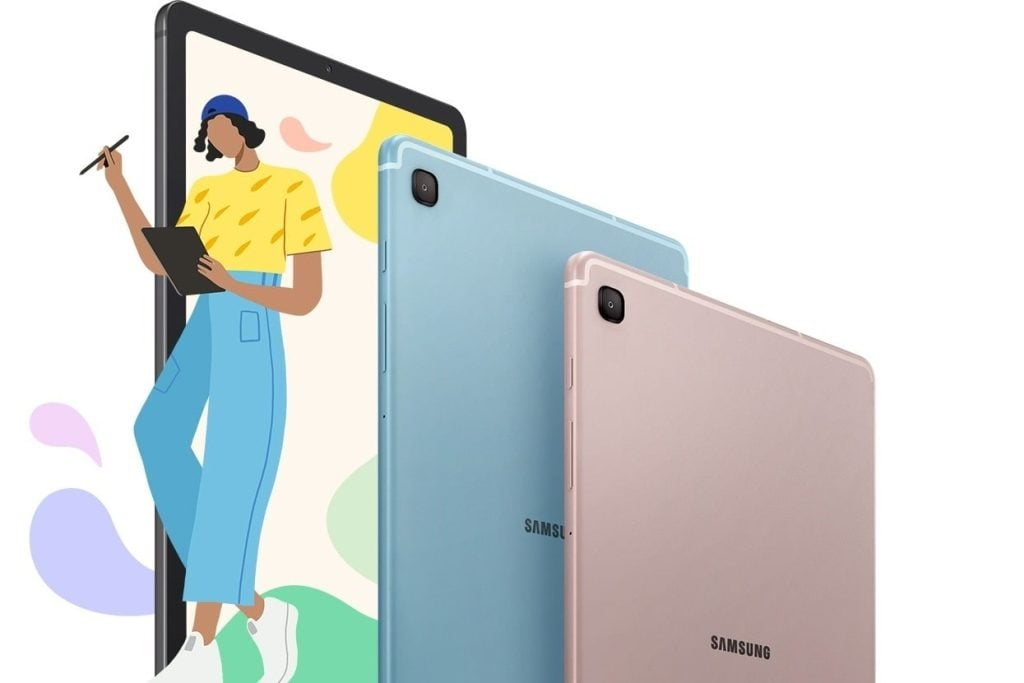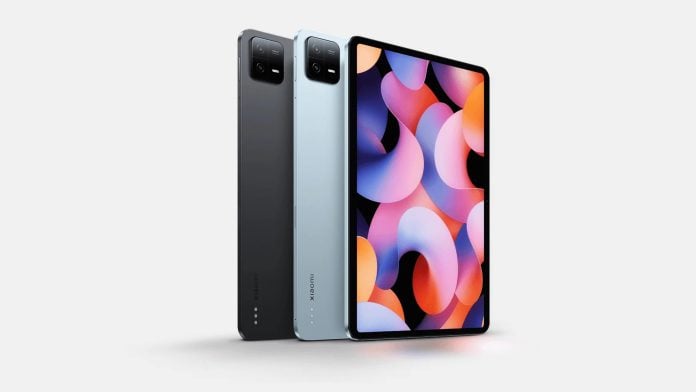Following the launch of the Galaxy Tab S6 5G in January 2020, Samsung came up with a Lite version of the product three months later. The Lite version, replaced the AMOLED display with an LCD one and the Snapdragon 855+ with the in-house Exynos 9611. Later on, the company released two iterations of the Galaxy Tab S6 Lite in 2022 and 2024. So let’s take a look at what’s different between the iterations.

Samsung Galaxy Tab S6 Lite 2024 vs 2022 vs 2020
To begin with, there are a lot of similarities between the three. However, there are some improvements in the two iterations which we are going to discuss here.
1. Design and Build
All the three tablets, surprisingly, come with the exact same build, design, and size. They offer an aluminum body and a glass front. Looking on the back you see a single camera module, which doesn’t stick out unlike many of its competitors. It makes it easier for you to work with the tablet placing it on a table without wobbles.
While all three models offer a dual speaker setup, the speakers sound slightly richer in the newer models. All the models also come with a stylus in the box, which also attaches magnetically to the side of the device.
2. Performance and Storage
Moving on to the performance, here are some notable hardware differences.
- Galaxy Tab S6 Lite 2020 – Exynos 9611
- Galaxy Tab S6 Lite 2022 – Snapdragon 720G
- Galaxy Tab S6 Lite 2024 – octa-core CPU (reportedly Exynos 1280)
The Exynos 9611 chip is a well-known one that describes many of Exynos’s traits such as inefficient operation and heating. In comparison, the Galaxy Tab S6 Lite 2022’s Snapdragon 720G chip is a lot more capable and offers a stable performance as well.
Just to give you an idea, here are the Geekbench scores:
| Product | Single-core | Multi-core |
| Galaxy Tab S6 Lite (2020) | 344 | 1231 |
| Galaxy Tab S6 Lite (2022) | 558 | 1706 |
| Galaxy Tab S6 Lite (2024) | 930 | 1843 |
When it comes to the latest 2024 edition, the chip has a 4+4 architecture (4×2.4 GHz & 4×2.0 GHz), which is similar to the 2020 edition’s Exynos 9611. According to a previous report, this is the company’s in-house Exynos 1280 chip, which has also performed similarly in Geekbench.
All three versions come with 4GB RAM and an optional 64GB or 128GB storage.
3. Display, Battery, and Charging
All three editions offer a 10.4-inch TFT LCD panel (not the best, but there’s an alternative that we’ll discuss later) and a single camera on the back and front. You can get an idea of the width of the display borders from the image. It’s basically the same.
The display offers a pixel density of 224 PPI with a resolution of 1200 x 2000, which is reasonable considering the price.
All the iterations come with a Li-Po 7040 mAh battery along with 15W charging support.
4. Android Version and Updates
The Samsung Galaxy Tab S6 Lite (2020) was released with Android 10 and offered 3 major OS updates. So, it won’t get Android 14.
Coming to the Tab S6 Lite (2022), it was released with Android 12 and should be updated to Android 15. Lastly, the new 2024 model comes equipped with Android 14, OneUI 6.1, and should offer you the latest features till Android 17.
5. Special Features
As part of Samsung’s ecosystem, these affordable tablets support the company’s DeX feature, which gives you a desktop-like layout when you connect an external keyboard and a mouse.
However, unlike the company’s premium phones and tablets, you cannot connect to an external monitor through, as these devices are limited to USB 2.0 (Type-C), which doesn’t support display output.
6. Alternative: Xiaomi Pad 6

If you’re okay with a non-Samsung device (or without One UI) there’s an appealing option – the Xiaomi Pad 6 (launched in Q2 2023).
The Xiaomi Pad 6 (review) offers a better high-quality display, an IPS LCD panel with 550 nits peak brightness, HDR 10 and Dolby Vision support, and a 144Hz refresh rate for smooth operation.
It equips the Snapdragon 870 chip which is slightly less capable than the OnePlus Pad’s chip but is still a lot more capable than the ones we discussed above. It also offers higher 6GB or 8GB RAM options alongside much faster UFS 3.1 storage.
It currently boots HyperOS based on Android 14 and has some sweet multitasking-friendly features.
The downside is that it doesn’t have cellular connectivity.
7. Which one to go for?
If you need cellular connectivity, use the tablet mostly for reading (doesn’t require better colors and contrast), and more importantly, don’t need to do heavier tasks like video editing, the Galaxy Tab S6 Lite (2022) and the Galaxy Tab S6 Lite (2024) will do just fine.
But even if you are planning to mostly consume video content, the difference is too noticeable to ignore. In that case, the Xiaomi Pad 6 will be no doubt a better fit. And if you are planning to run heavy applications, it should be the one you should go for.
If you prefer OneUI anyway, we recommend going with the Galaxy Tab S6 Lite 2024, so that you get longer software support.
Related:
- Redmi Turbo Series Explained: Flagship-Grade Performance in the Mid-Range
- Lenovo Legion Y700 2023: Save $100 on this 8-inch gaming Android tablet
- Samsung Blames Google for the Touchscreen Issue on Galaxy S23
- Xiaomi Pad 6S Pro 12.4 Review: Bigger, Stronger, but Costlier
- It’s not FE, Samsung will re-release Galaxy Watch 4 in 2024







